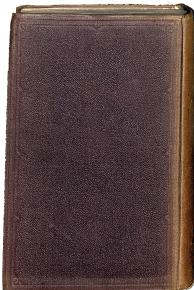Leitch, John
and one of the eight foreign associates of the National Institute of FranceVolume III., Hierroglyphical Essays and Correspondence, &c.
Signatur: A009-B100-D001-A004
Buchart: Hardcover
Verlag: John Murray, London (Großbritannien)
Veröffentlichung: 2025
Sprache: Englisch
Seiten: 514
Format: gr. 8°
Größe (HxBXT): 23,0 x 15,0 cm x 5,0 cm

Bitte loggen Sie sich ein um dieses Dokument ansehen zu können.
Inhaltsverzeichnis:
1. Remarks on the Ancient Egyptian Manuscripts, with Translation of the Rosetta Inscription; 2. Correspondence relative to the Rosetta Inscription; 3. Egypt; 4. Inscription on the Paw of the Great Sphinx; 5. Observations on a Greek Manuscript on Papyrus; 6. Correspondence upon Hieroglyphical Subjects; 7. Discoveries in Hieroglyphic Literature; 8. Correspondence upon Hieroglyphical Subjects; 9. Advertisement to Dr. Young's Egyptian Dictionary; 10. The Article "Languages" from the Supplement to the Encyclopaedia Britannica; 11. On the Papyri of Herculaneum; 12. Live of Emminent Scholars: Horne Tooke; 13. Live of Emminent Scholars: Gilbert Wakefield; 14. Live of Emminent Scholars: Jacob Bryant; 15. Live of Emminent Scholars: Richard Porson
Kurzbeschreibung:
The works of Thomans Young, M.D.
Textpassagen (Auszüge):
"In arranging the materials of this volume our great object has been present Dr. Young's Hiersoglyphical Essays and Correspondence in chronological order, and to furnish on fitting occasions the precise dates of such of M. Champollion's publications as bear reference to the subjects handled by Dr. Young, together with extracts of the most important passages; by which means the reader will be enabled to ascertain what was really accomplished by each, and to form a correcr judgment on a question whose true merits have been concealed amid a mass of inaccuracies and misrepresentations. The evidence establishing Dr. Young's discoveriey of the hieroglyphical alphabet, several years before Champollion suspected its existence, is so clear and conclusive, that it must appear of great surprise to the candid inquirer how any claim should have been set up in behalf of the latter. [...]"
1. Remarks on the Ancient Egyptian Manuscripts, with Translation of the Rosetta Inscription; 2. Correspondence relative to the Rosetta Inscription; 3. Egypt; 4. Inscription on the Paw of the Great Sphinx; 5. Observations on a Greek Manuscript on Papyrus; 6. Correspondence upon Hieroglyphical Subjects; 7. Discoveries in Hieroglyphic Literature; 8. Correspondence upon Hieroglyphical Subjects; 9. Advertisement to Dr. Young's Egyptian Dictionary; 10. The Article "Languages" from the Supplement to the Encyclopaedia Britannica; 11. On the Papyri of Herculaneum; 12. Live of Emminent Scholars: Horne Tooke; 13. Live of Emminent Scholars: Gilbert Wakefield; 14. Live of Emminent Scholars: Jacob Bryant; 15. Live of Emminent Scholars: Richard Porson
Kurzbeschreibung:
The works of Thomans Young, M.D.
Textpassagen (Auszüge):
"In arranging the materials of this volume our great object has been present Dr. Young's Hiersoglyphical Essays and Correspondence in chronological order, and to furnish on fitting occasions the precise dates of such of M. Champollion's publications as bear reference to the subjects handled by Dr. Young, together with extracts of the most important passages; by which means the reader will be enabled to ascertain what was really accomplished by each, and to form a correcr judgment on a question whose true merits have been concealed amid a mass of inaccuracies and misrepresentations. The evidence establishing Dr. Young's discoveriey of the hieroglyphical alphabet, several years before Champollion suspected its existence, is so clear and conclusive, that it must appear of great surprise to the candid inquirer how any claim should have been set up in behalf of the latter. [...]"